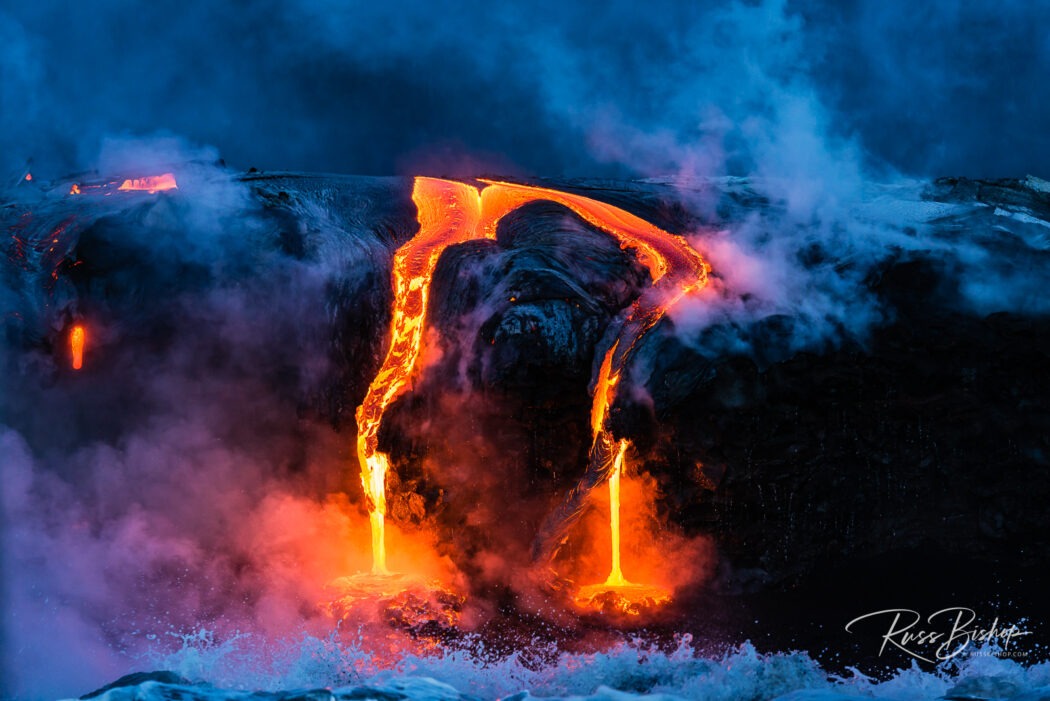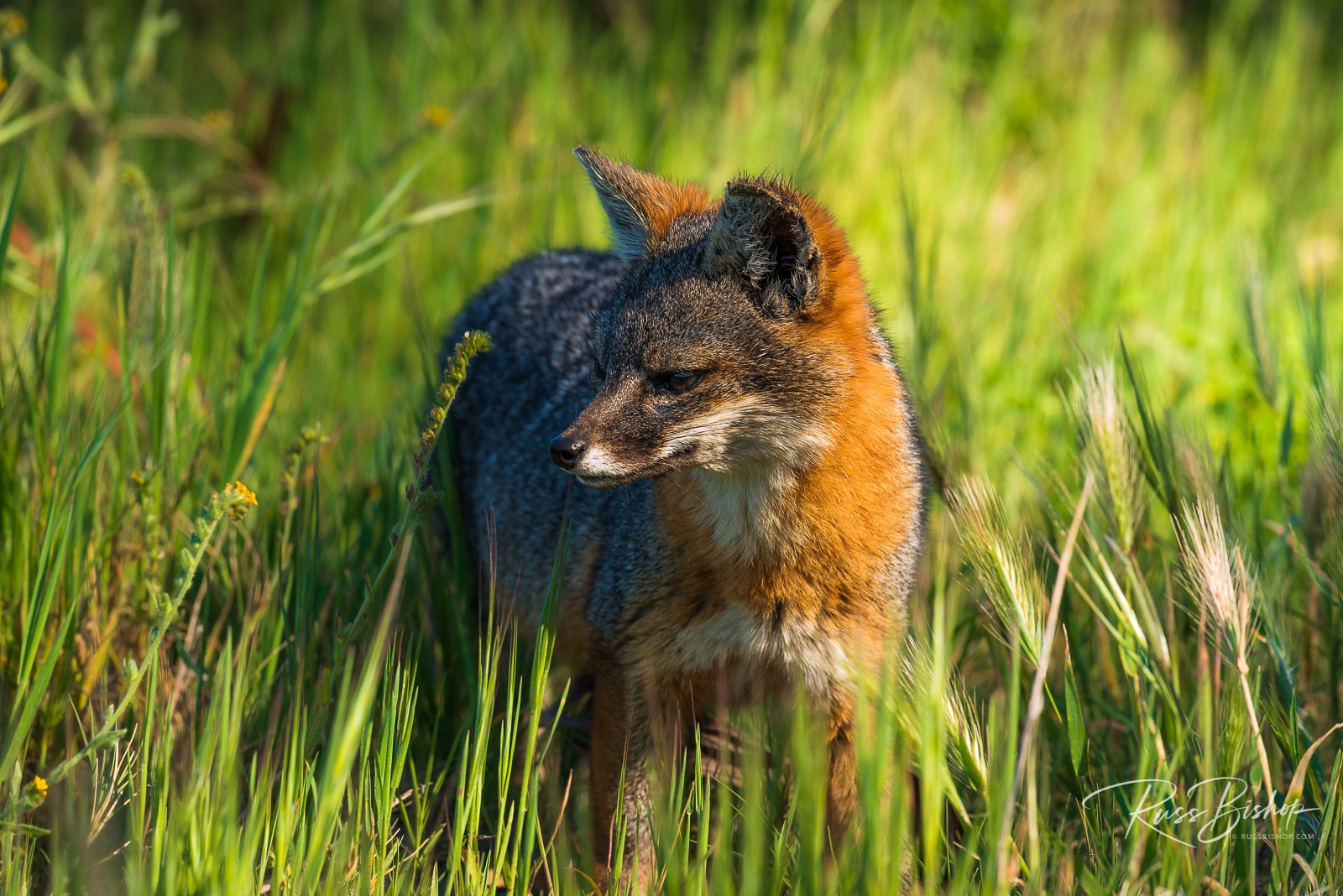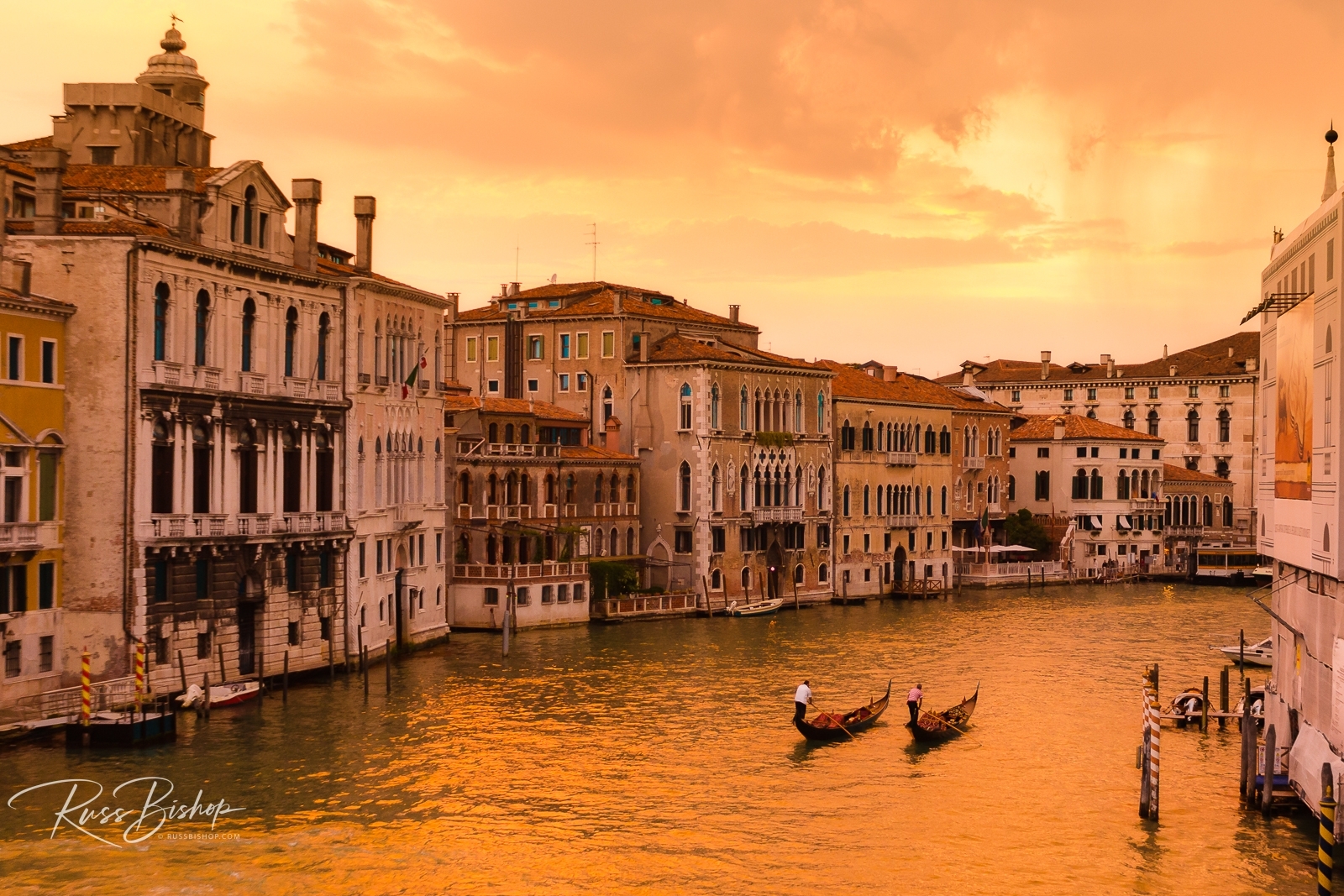
Pele’s Realm. For more than a quarter century the lava on Hawaii’s Big Island has continued to flow. From the Pu’u O’o vent on the flanks of Kilauea down into the Pacific and lately a fountain filling the sky above Halema’uma’u crater. A mesmerizing river of molten earth that is equally beautiful and terrifying as it slowly devours everything in it’s path, while adding acres to Hawaii’s newest Island.
Since ancient times Pele, the Goddess of Fire, has been a central figure of Hawaiian lore. “She-Who-Shapes-The-Sacred-Land” is often recounted in ancient Hawaiian chants, and today is the most visible of the Hawaiian deities.
Pele is known to be a passionate goddess, yet volatile and capricious as evidenced by her destruction of the modern Waha’ula visitor center while completely avoiding an ancient heiau (Hawaiian temple) in her path.
I’ve been back many times over the past thirty years to pay homage to Pele, and I’m always in awe of her powerful hand in shaping these Islands. Will Rogers once said, “buy real estate, they don’t make it any more”. But clearly he had never been to this part of the world!
©Russ Bishop/All Rights Reserved


